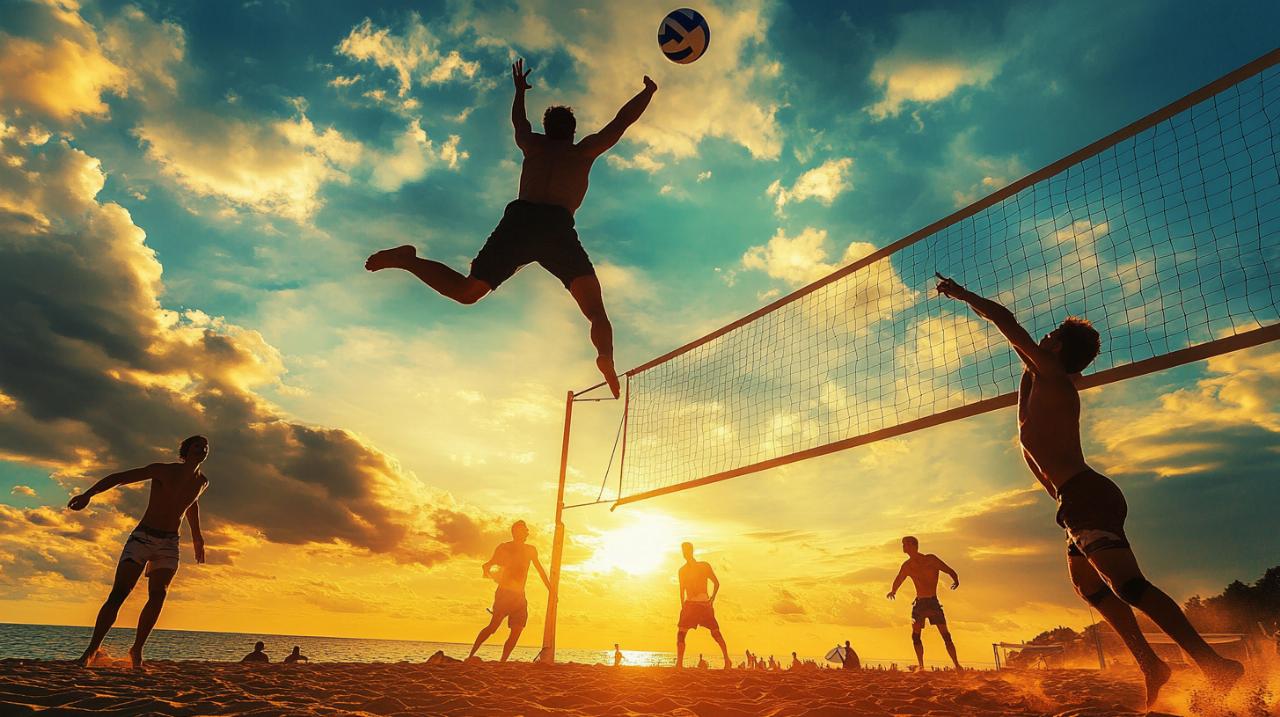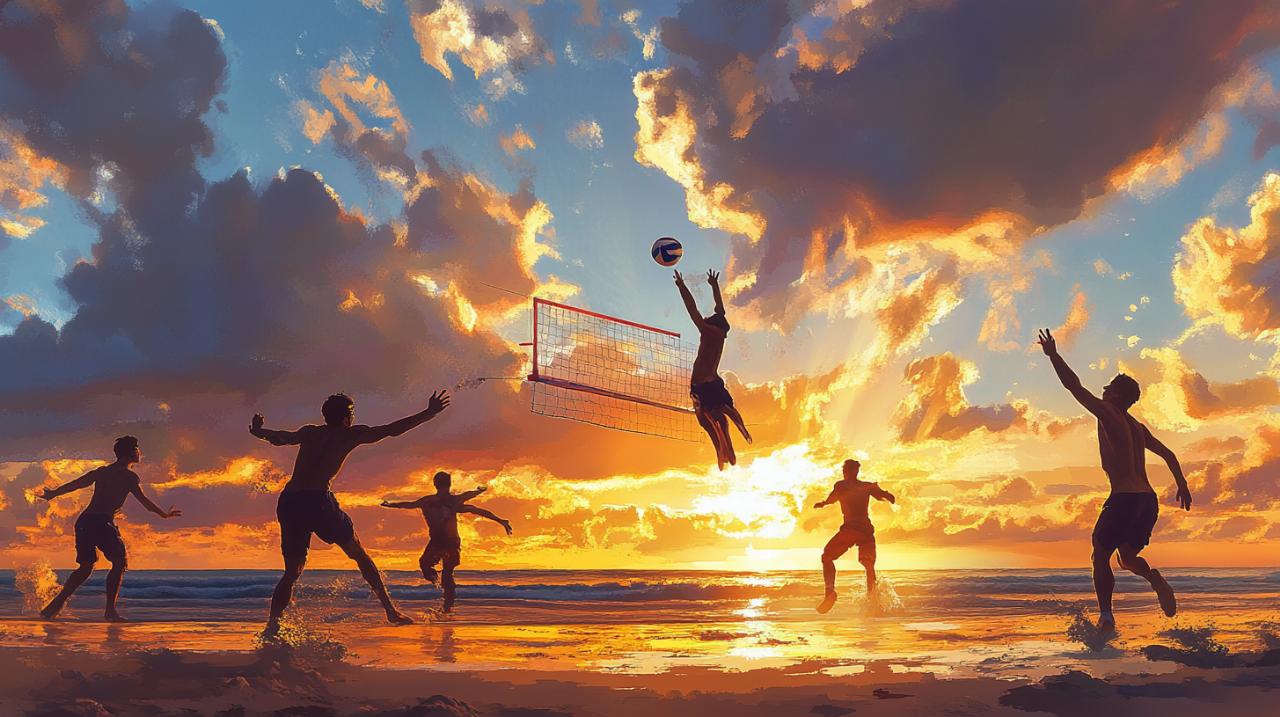Comprehensive Guide to Choosing the Right Beach Volleyball Ball

Choosing the perfect beach volleyball ball can transform your experience on the sand, whether you're a seasoned competitor or simply enjoying a sunny afternoon with friends. The right ball enhances control, provides better grip, and withstands the rigours of outdoor play. Understanding the differences between indoor and beach volleyballs is essential, as each is designed with specific demands in mind. Beach volleyballs are heavier and slightly larger to counter wind effects, typically weighing between 260 and 280 grams with a circumference of 66 to 68 centimetres. This guide will help you navigate the key factors, from material and build quality to playing conditions and skill level, ensuring you make an informed choice that suits your needs.
Understanding ball specifications and construction
When selecting a beach volleyball ball, the specifications and construction are paramount. These elements directly influence how the ball performs in various conditions and how long it will last. The material, size, weight, and internal components all play crucial roles in delivering a satisfying playing experience.
Size, weight, and material considerations
Official beach volleyballs adhere to specific standards, with a circumference ranging from 66 to 68 centimetres and a weight of 260 to 280 grams. This slight increase in size and weight compared to indoor volleyballs helps counteract wind resistance, a common challenge in outdoor play. The Wilson OPTX AVP ball, for instance, is engineered for stability in windy conditions and is widely used in tournaments. Understanding these beach volleyball ball characteristics guide you toward models that meet international standards, such as those approved by the FIVB, ensuring consistency and reliability during competitive play. For younger players or children under 12, a size 4 volleyball is more appropriate, measuring 62 to 64 centimetres in circumference and weighing between 230 and 250 grams. This smaller size aids technique development and prevents discomfort during training sessions. The material used in the ball's construction is equally important. Beach volleyballs are typically made from high-resistance polyurethane or synthetic leather, designed to withstand abrasion from sand and exposure to sunlight and moisture. The Mikasa VLS300, for example, is water-resistant and used in international beach volleyball competitions, offering durability and a reliable touch. Synthetic leather is particularly popular for its waterproof properties and ability to maintain grip even when wet. In contrast, genuine leather, while offering a premium feel, tends to absorb water and is less suitable for beach play. Rubber covers are another option, providing excellent durability for recreational use on rougher surfaces. The bladder inside the volleyball, usually made of butyl rubber, ensures good air retention, reducing the frequency of inflation and maintaining consistent pressure during play. The recommended inflation pressure for beach volleyballs is 2.5 to 3.2 psi, lower than indoor volleyballs, which allows for better control and a softer touch on outdoor surfaces.
The Impact of Build Quality on Durability
Build quality is a critical factor that determines how long your volleyball will last and how well it will perform over time. High-quality beach volleyballs are often stitched rather than moulded, which enhances water resistance and allows for improved control in outdoor conditions. Stitching also contributes to the ball's structural integrity, preventing panels from separating after prolonged use. The Wilson OPTX AVP, for instance, has proven more durable than some competitors in comparative tests, making it a worthwhile investment for regular players. Advanced models often feature microfibre coatings with dimpled surfaces, which enhance grip and aerodynamics, stabilising the ball's flight path even in gusty conditions. Cheaper volleyballs, typically costing between 10 and 15 pounds, often use inferior materials that lack durability and consistency. These replicas may seem like a bargain, but they tend to lose air quickly, develop surface cracks, and provide an unreliable bounce, which can be frustrating for players at any level. A good quality volleyball should last for two years or more with proper care, making mid-range to premium options more cost-effective in the long run. For competitive and regular players, investing between 23 and 40 pounds in a mid-range ball strikes a balance between affordability and performance. Professional and competitive players who participate in tournaments should consider spending 60 pounds or more on tournament-quality balls such as the Wilson AVP OPTX or Mikasa BV550C. These balls are engineered to meet stringent standards and are used in professional competitions, offering consistency, durability, and superior touch. Proper maintenance further extends the lifespan of your volleyball. After each session on the beach, clean the ball with fresh water to remove salt and sand, which can degrade the material over time. Avoid prolonged exposure to direct sunlight, as this can damage both the outer cover and the internal bladder. Regularly check and adjust the inflation pressure, and store the ball in a stable temperature environment away from direct heat sources. Reducing the inflation pressure slightly when storing the ball for extended periods can also prevent deformation and prolong its usability.
Matching Your Ball to Playing Conditions and Skill Level

Selecting the right beach volleyball ball is not solely about specifications and build quality. It also involves considering your playing conditions, experience level, and intended use. A ball that suits a professional competitor may not be the best choice for a beginner or recreational player, and environmental factors such as wind and temperature can significantly affect performance.
Selecting Based on Your Experience and Playing Style
Your level of play is a crucial determinant in choosing the right volleyball. For beginners and recreational players, a softer, more affordable ball is often the best option. These balls, typically priced between 15 and 23 pounds, are lighter and gentler on the arms, reducing discomfort during extended play. A lighter ball also allows beginners to develop their skills without the risk of injury or strain. The Wilson OPTX AVP is frequently recommended for beginners due to its excellent control and stability, even though it is also used in competitive settings. Its two-colour design enhances visibility, making it easier to track the ball during play. For intermediate players who train two to three times a week, a mid-range ball that offers a balance of durability, touch, and performance is ideal. These balls, often featuring synthetic leather coatings, provide a firmer touch than beginner options while remaining comfortable to use. Models such as the mid-range Mikasa or Molten volleyballs are popular choices for this category, offering consistent performance and good value for money. Advanced and professional players require volleyballs that meet official standards and are used in competitive matches. The Mikasa VLS300, for instance, is the gold standard in professional beach volleyball, known for its water resistance and superior performance. However, it is more expensive and requires a higher level of technical skill to fully appreciate its benefits. Similarly, the Molten V5M5000 is used in Spanish volleyball competitions and British Universities and Colleges Sports events, making it a reliable choice for serious competitors. For children and young players, selecting the appropriate size and weight is essential. A size 4 volleyball, such as the Molten V4M1300, is designed for children under 12 and helps them develop proper technique without the risk of injury. For players aged between 10 and 14, a ball weighing 230 to 250 grams is recommended, while those aged 15 and above should use the official weight of 260 to 280 grams. Junior volleyballs weighing around 230 grams are also available for younger players, ensuring they can enjoy the game comfortably and safely.
Weather factors and environmental performance
Weather conditions and the playing environment have a significant impact on volleyball performance, particularly for beach play. Wind is one of the most challenging factors, as it can disrupt the ball's flight path and reduce control. Beach volleyballs are specifically designed with this in mind, featuring a slightly heavier weight and advanced aerodynamics to stabilise flight even in gusty conditions. The Wilson OPTX AVP ball, for example, is renowned for its stability in windy environments, making it a popular choice for outdoor tournaments. The ball's two-colour design also enhances visibility, which is particularly useful when playing in bright sunlight or at dusk. Moisture is another critical consideration. Beach volleyballs are often exposed to water, whether from sweat, rain, or splashes from the sea. Water-resistant materials such as high-quality synthetic leather or polyurethane are essential to prevent the ball from becoming waterlogged and losing its shape. The Mikasa VLS300 is specifically designed to resist water absorption, ensuring consistent performance throughout the game. Stitched construction, rather than moulded panels, further enhances water resistance and prevents the ball from separating in damp conditions. Temperature fluctuations can also affect the ball's inflation pressure and material integrity. Extreme heat can cause the air inside the ball to expand, increasing pressure and potentially damaging the bladder or seams. Conversely, cold temperatures can cause the air to contract, reducing pressure and affecting bounce quality. Regularly checking and adjusting the inflation pressure, especially when playing in varying weather conditions, ensures optimal performance. The recommended pressure for beach volleyballs is 2.5 to 3.2 psi, which is lower than indoor volleyballs, allowing for better control and a softer touch on sand. Surface conditions also play a role. While beach volleyballs are designed for sand, some outdoor volleyballs combine features of indoor and beach balls to provide durability on rougher surfaces such as grass or gravel. These hybrid models are useful for recreational players who enjoy playing in different environments. However, for competitive beach play, it is always best to use a ball specifically designed for sand to ensure optimal performance and longevity. Proper care and maintenance are essential to protect your volleyball from environmental damage. After playing on the beach, rinse the ball with fresh water to remove salt and sand, which can cause abrasion and degrade the material. Avoid leaving the ball in direct sunlight for prolonged periods, as this can damage the outer cover and the internal bladder. Store the ball in a cool, dry place, away from direct heat sources, and reduce the inflation pressure slightly for long-term storage to prevent deformation. Regularly inspect the ball for signs of wear and tear, such as cracks, loose stitching, or loss of shape, and replace it when necessary to maintain performance and safety.























